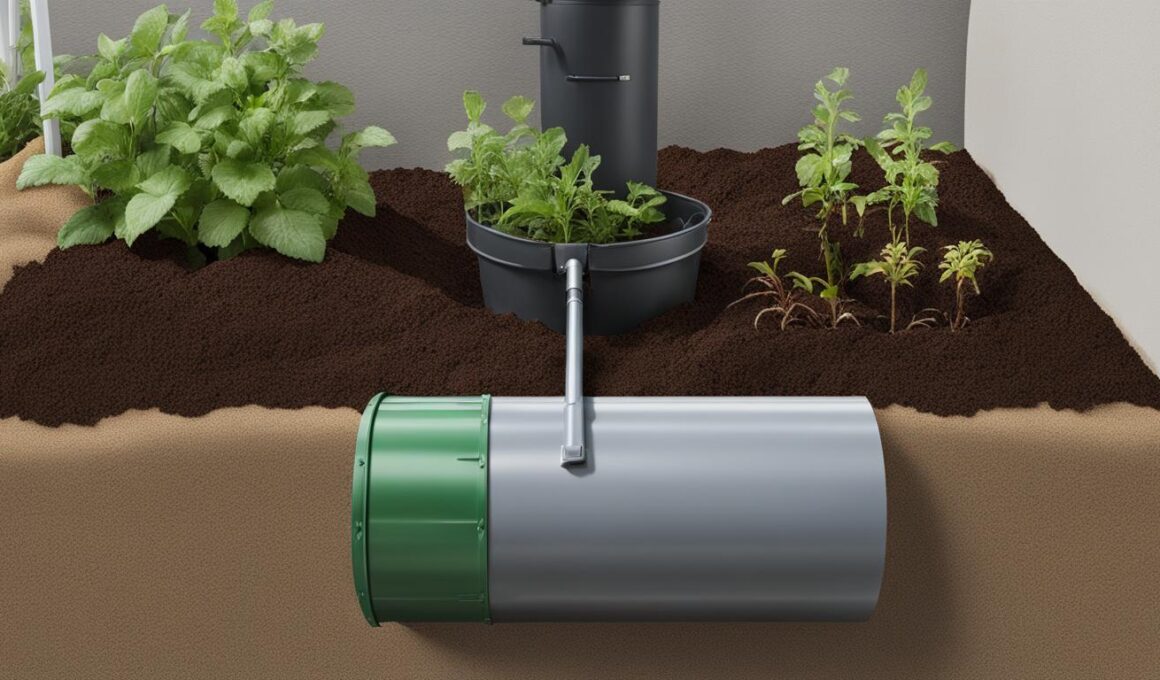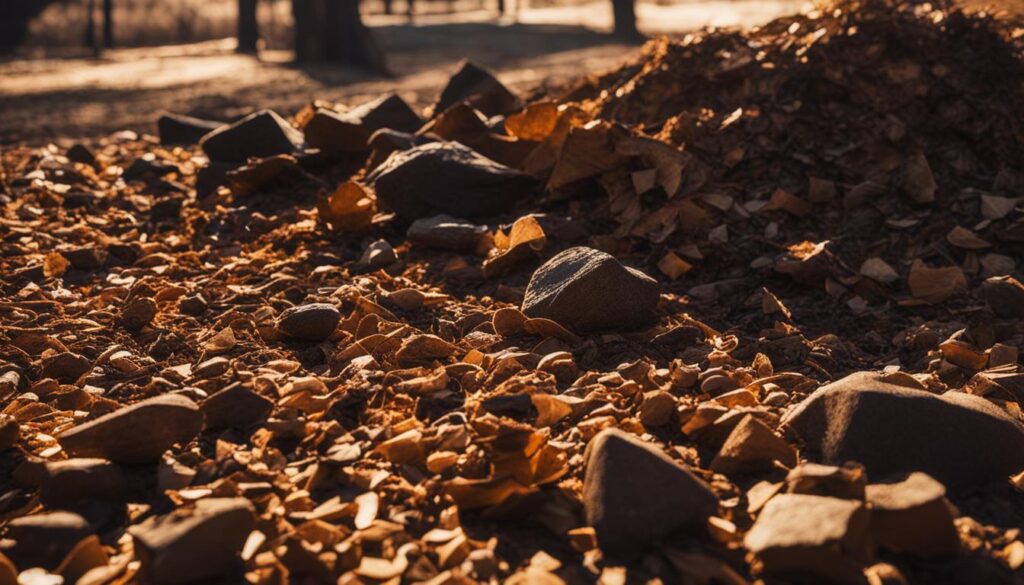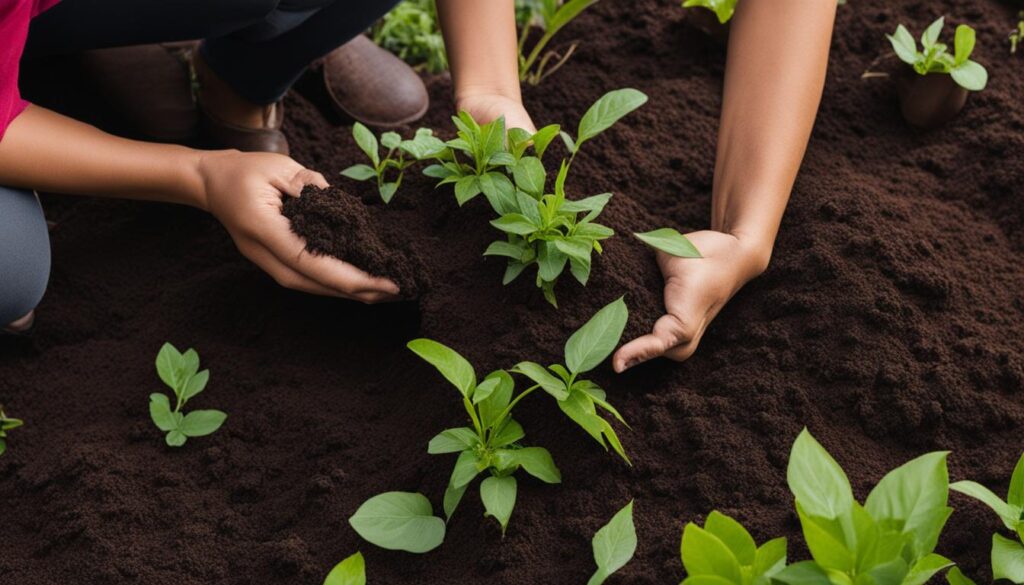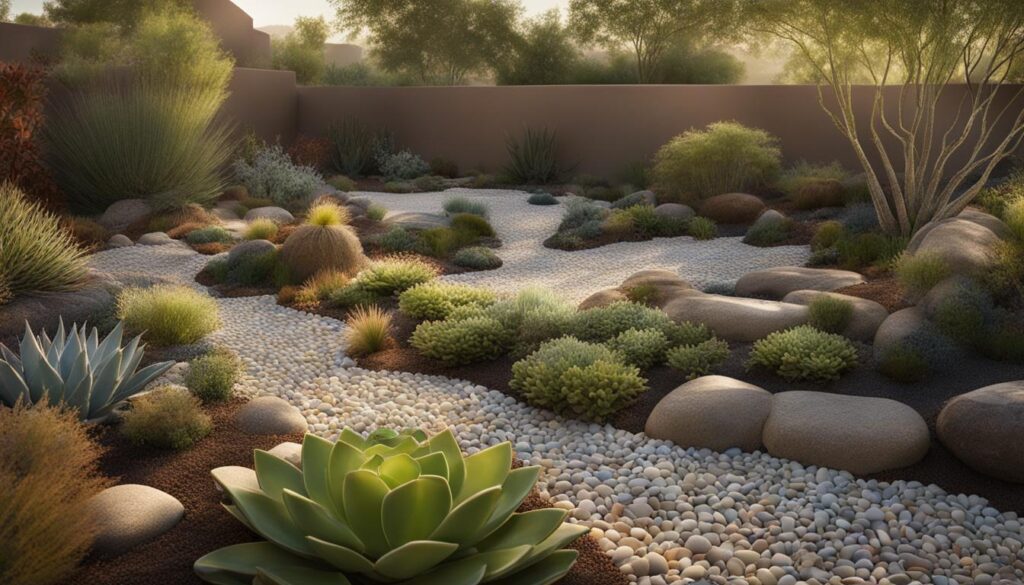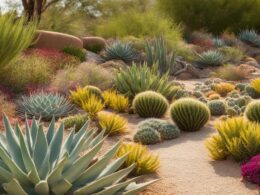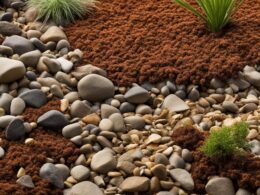Creating a water-efficient and sustainable landscape is essential for homeowners and garden enthusiasts alike. By implementing permeable soil solutions in your xeriscapes, you can achieve just that.
Permeable soil solutions are designed to enhance the drainage and aeration of the soil, allowing for better water retention and healthier plant growth. With the right soil mix and amendments, you can create a beautiful and eco-friendly outdoor space that thrives even in water-scarce conditions.
In this article, we will explore the benefits and techniques of using permeable soil solutions in xeriscapes. From understanding the importance of permeable soil to selecting the right soil amendments, we will guide you on how to create a unified and sustainable landscape. We will also delve into the selection of drought-tolerant plants, mulching techniques, and the incorporation of permeable hardscaping features. By following these tips, you can design your own permeable xeriscape that not only conserves water but also enhances the functionality and beauty of your outdoor environment.
Key Takeaways:
- Implementing permeable soil solutions in xeriscapes improves drainage and aeration.
- Permeability promotes water conservation and drought tolerance in xeriscapes.
- Choosing the right soil amendments enhances the functionality of the soil.
- Permeable soil solutions create a unified and aesthetically pleasing landscape.
- Selecting drought-tolerant plants reduces water consumption and maintenance efforts.
Importance of Permeable Soil in Xeriscapes
Permeable soil plays a crucial role in xeriscapes as it promotes water conservation and drought tolerance. By allowing water to infiltrate the soil more effectively, permeable soil helps prevent erosion, reduces runoff, and improves water absorption by plants’ roots. This not only helps conserve water but also ensures the sustainability of the landscape during periods of limited rainfall. Implementing permeable soil solutions in xeriscapes is key to creating a resilient and water-efficient outdoor environment.
When rain or irrigation water falls on impermeable surfaces, such as compacted soil or concrete, it tends to run off, carrying away valuable nutrients and topsoil. In contrast, permeable soil absorbs water like a sponge, allowing it to slowly percolate down through the soil layers. This process not only replenishes underground water sources but also provides a steady supply of moisture for plants. By maintaining soil moisture levels and reducing surface runoff, permeable soil helps xeriscapes survive and thrive even in arid regions.
In addition to water conservation, permeable soil enhances the drought tolerance of plants in xeriscapes. By improving the drainage and aeration of the soil, it prevents waterlogging and ensures that plant roots have access to oxygen. This oxygen-rich environment promotes healthy root development and enhances the overall resilience of plants, making them better equipped to withstand prolonged periods of drought. With permeable soil, xeriscapes can achieve higher levels of water efficiency and significantly reduce the need for supplemental irrigation.
Benefits of Permeable Soil in Xeriscapes:
- Water conservation by preventing runoff
- Improvement of soil drainage and aeration
- Increase in water absorption by plant roots
- Enhancement of drought tolerance in plants
- Prevention of erosion and topsoil loss
Selecting the Right Soil Amendments for Xeriscapes
When it comes to creating a successful xeriscape, choosing the right soil amendments is crucial. These amendments play a significant role in improving the drainage and aeration of the soil, ensuring optimal growing conditions for your xeriscape plants. By incorporating the right soil amendments, you can promote healthy root development, prevent waterlogging, and reduce the risk of soil compaction.
There are several options for soil amendments that can enhance the permeability of your xeriscape soil. Enlarged aggregates such as Haydite, Turface, and Infield Soil Conditioner can be added to the soil mix to create air pockets and improve water movement. These amendments not only enhance drainage but also provide the necessary aeration for plant roots to thrive.
It’s important to consider the specific needs of your xeriscape plants when selecting soil amendments. Some plants may require a more lightweight soil mixture, while others may benefit from amendments that improve water retention. Consulting with a professional landscaper or horticulturist can help you determine the best combination of soil amendments for your xeriscape.
Table: Common Soil Amendments for Xeriscapes
| Soil Amendment | Benefits |
|---|---|
| Haydite | Improves drainage and aeration |
| Turface | Enhances water movement and prevents compaction |
| Infield Soil Conditioner | Improves soil structure and promotes root development |
| Compost | Increases organic matter and nutrient content |
| Perlite | Improves soil porosity and water retention |
Incorporating the right soil amendments in your xeriscape will not only improve the overall health and vitality of your plants, but also contribute to water conservation and sustainable landscaping practices. Take the time to research and select the appropriate amendments for your xeriscape, and enjoy a beautiful and thriving outdoor space.
Creating a Unified Landscape with Permeable Soil Solutions
When designing a xeriscape, one of the key aspects to consider is the use of permeable soil solutions. Not only do these solutions contribute to water conservation, but they also play a significant role in creating a unified and aesthetically pleasing outdoor space. By utilizing the same soil mix and amendments throughout the landscape, you can ensure consistency and harmony in both plant growth and appearance.
Implementing permeable soil solutions in a xeriscape not only enhances the visual appeal of the landscape but also promotes sustainability. By providing optimal conditions for all plants within the xeriscape, you can create an environment that thrives with minimal water requirements. This not only benefits the overall health of the plants but also reduces the need for excessive watering, resulting in water conservation.
By using permeable soil solutions, you can achieve a unified landscape that is not only visually appealing but also ecologically sustainable. The consistent soil mix and amendments ensure that plants receive the necessary nutrients and water retention capabilities, allowing them to thrive. This approach creates a cohesive and harmonious outdoor space that is both beautiful and environmentally friendly.
Benefits of Using Permeable Soil Solutions in a Xeriscape:
- Promotes water conservation
- Enhances the visual appeal of the landscape
- Reduces the need for excessive watering
- Creates optimal growing conditions for plants
- Contributes to the overall sustainability of the landscape
By incorporating permeable soil solutions in your xeriscape design, you can create a unified landscape that is not only visually stunning but also environmentally responsible. The consistent use of permeable soil mix and amendments ensures that plants receive the necessary nutrients, water retention, and proper drainage, resulting in a thriving and sustainable outdoor space.
| Benefits of Using Permeable Soil Solutions in a Xeriscape |
|---|
| Promotes water conservation |
| Enhances the visual appeal of the landscape |
| Reduces the need for excessive watering |
| Creates optimal growing conditions for plants |
| Contributes to the overall sustainability of the landscape |
Drought-Tolerant Plant Selection for Xeriscapes
When designing a water-efficient and sustainable xeriscape, selecting the right plants is essential. Opting for drought-tolerant plant species not only conserves water but also ensures a thriving landscape that can withstand water-scarce conditions. By incorporating a diverse range of plants with different textures, forms, heights, and seasonal interests, you can create a visually appealing and resilient outdoor space.
In a xeriscape, drought-tolerant plants are adapted to survive with minimal water requirements. These plants have developed various mechanisms to endure dry climates, such as deep root systems, succulent leaves, or waxy coatings that reduce water loss. By choosing these plants, you can significantly reduce the need for excessive watering, leading to water conservation and decreased maintenance efforts.
Some popular drought-tolerant plant options for xeriscapes include:
- Yucca: Known for its architectural foliage and striking flower spikes, yucca is a hardy plant that thrives in arid environments.
- Lavender: With its aromatic flowers and grey-green foliage, lavender adds beauty and fragrance to any xeriscape.
- Agave: Featuring unique rosette-shaped leaves, agave plants are excellent choices for adding structure and visual interest to a water-efficient landscape.
- Sedum: These low-growing succulents are perfect for groundcovers and provide a burst of color with their vibrant flowers.
- Penstemon: With their tubular flowers and attractive foliage, penstemons are well-suited for xeriscapes and attract pollinators like bees and butterflies.
| Plant | Characteristics |
|---|---|
| Yucca | Architectural foliage, striking flower spikes |
| Lavender | Aromatic flowers, grey-green foliage |
| Agave | Rosette-shaped leaves, adds structure |
| Sedum | Low-growing succulents, vibrant flowers |
| Penstemon | Tubular flowers, attracts pollinators |
By incorporating drought-tolerant plants into your xeriscape, you not only conserve water but also create a beautiful and sustainable outdoor space that thrives in water-limited conditions. The varied textures, colors, and forms of these plants provide aesthetic appeal while contributing to environmental responsibility.
Mulching Techniques for Xeriscapes
Mulching is a crucial aspect of creating and maintaining a successful xeriscape. By applying a layer of mulch to the soil surface, you can reap multiple benefits such as water retention and weed suppression. Whether you choose gravel or shredded bark mulch, the right mulching techniques can significantly contribute to the success of your water-efficient landscaping.
Mulching helps retain moisture in the soil by reducing evaporation, which is particularly important in xeriscapes where water conservation is a priority. This allows plants to access water more effectively, promoting healthy growth and reducing the need for frequent watering. Additionally, mulch acts as an insulator, regulating soil temperature and protecting plant roots from extreme heat or cold.
In terms of weed suppression, mulch provides a physical barrier that prevents weed seeds from reaching the soil surface. This reduces weed competition for water, nutrients, and sunlight, allowing your xeriscape plants to thrive without unnecessary competition. By keeping weeds at bay, mulching also minimizes the need for time-consuming and potentially harmful weed control methods.
Table: Mulching Materials Comparison
| Material | Water Retention | Weed Suppression | Aesthetics |
|---|---|---|---|
| Gravel | Low | High | Modern, minimalist |
| Shredded Bark | High | Moderate | Natural, rustic |
When choosing between gravel and shredded bark mulch, consider a few key factors. Gravel mulch offers excellent drainage, making it suitable for xeriscapes with plants that prefer drier conditions. It also provides high weed suppression due to its non-organic nature. Gravel mulch can lend a modern and minimalist aesthetic to your xeriscape, creating a clean and sleek look.
On the other hand, shredded bark mulch has higher water retention capabilities, making it ideal for xeriscapes with plants that thrive in moister environments. While it still offers weed suppression, it may require occasional refreshing to maintain its effectiveness. Shredded bark mulch adds a natural and rustic touch to your xeriscape, blending harmoniously with the overall organic feel of the landscape.
Remember, regardless of the mulching material you choose, ensure a sufficient layer of mulch is applied, typically around 2 to 4 inches thick. This will provide optimal benefits for water retention, weed suppression, and overall plant health in your xeriscape.
Incorporating Permeable Hardscaping in Xeriscapes
Permeable hardscaping features provide an excellent opportunity to enhance the water drainage and overall design of your xeriscape. By incorporating elements such as permeable pavers or gravel pathways, you can improve the functionality and sustainability of your outdoor space. These features allow rainwater to infiltrate the soil instead of causing runoff, ensuring efficient water management within your landscape.
Using permeable hardscaping in your xeriscape not only promotes water conservation but also adds visual appeal to your outdoor environment. The contrast between permeable pavers and surrounding vegetation creates an interesting texture and aesthetic. Additionally, these features can be customized to match your design preferences and complement the overall theme of your xeriscape.
When incorporating permeable hardscaping, it is essential to consider proper installation and maintenance. Ensure that the base materials are well-prepared, allowing for proper water infiltration. Regular maintenance, such as removing debris or sediment buildup, will help maintain the performance and longevity of your hardscaping features.
Permeable Hardscaping Benefits:
- Improves water drainage and reduces runoff.
- Enhances the visual appeal and texture of your xeriscape.
- Allows for customization to match your design preferences.
- Contributes to the overall sustainability and functionality of your outdoor space.
Permeable Hardscaping Considerations:
- Ensure proper installation and base preparation for optimal water infiltration.
- Maintain and clean the hardscaping features regularly to ensure their performance.
- Choose materials that are suitable for your climate and design requirements.
| Hardscaping Feature | Advantages |
|---|---|
| Permeable pavers |
|
| Gravel pathways |
|
The Impact of Permeable Soil Solutions on Water Consumption
Reducing Water Usage Through Permeable Soil Solutions
Incorporating permeable soil solutions in xeriscapes can have a significant impact on water consumption. By improving the drainage and water retention of the soil, these solutions provide plants with better access to moisture, reducing the need for excessive watering. This not only conserves water resources but also helps homeowners save on their water bills. Utilizing permeable soil in xeriscapes is a sustainable landscaping approach that promotes both environmental responsibility and cost savings.
Permeable soil solutions enhance water efficiency by allowing water to infiltrate the soil more effectively. This helps prevent erosion, reduces runoff, and increases the absorption of water by plants’ roots. As a result, xeriscapes with permeable soil require less supplemental watering, making them a practical choice for regions with limited water availability or where water conservation is a priority.
By implementing permeable soil solutions, you can create a resilient outdoor environment that thrives even during periods of limited rainfall. The improved drainage and moisture retention capabilities of permeable soil contribute to the overall health and vitality of your xeriscape, ensuring the long-term sustainability and beauty of your landscape.
Implementing permeable soil solutions in xeriscapes not only reduces water consumption but also helps create a more environmentally-friendly outdoor space. By conserving water resources and promoting sustainable landscaping practices, permeable soil solutions play a crucial role in creating a water-efficient and visually appealing xeriscape. Consider incorporating these solutions into your own landscape design to enhance both the functionality and sustainability of your outdoor space.
Case Study: Successful Xeriscape Transformation with Permeable Soil Solutions
Let’s explore a real-life example of a successful xeriscape transformation using permeable soil solutions. In this case study, a conventional landscape was converted into a thriving and visually appealing xeriscape by implementing permeable soil, selecting drought-tolerant plants, and incorporating appropriate mulching techniques. The results showcase the practical application and positive outcomes of utilizing permeable soil solutions in sustainable landscaping.
“The transformation of our landscape has been truly remarkable. By incorporating permeable soil solutions, we have not only reduced our water consumption but also created a beautiful and low-maintenance outdoor space. The plants thrive in the well-drained soil, and we no longer have to worry about waterlogging or excessive irrigation.”
The implementation of permeable soil solutions played a crucial role in enhancing the resilience and sustainability of the xeriscape. The improved drainage and water retention capabilities allowed for better plant growth and reduce the risk of water runoff and erosion. Additionally, the selection of drought-tolerant plants further minimized water requirements, making the landscape more resilient during dry spells.
Table: Transformation Overview
| Aspect | Before Transformation | After Transformation |
|---|---|---|
| Water Consumption | High | Significantly Reduced |
| Maintenance Efforts | High | Low |
| Plant Health | Poor | Thriving |
| Landscape Appearance | Uninspiring | Visually Appealing |
This case study exemplifies the transformative power of permeable soil solutions in creating sustainable and aesthetically pleasing xeriscapes. By implementing these solutions, homeowners can not only reduce their environmental impact but also enjoy the benefits of a low-maintenance and water-efficient outdoor space.
With this case study as inspiration, you too can design your own permeable xeriscape using sustainable landscaping techniques. In the next section, we will provide practical tips and guidelines for creating a water-efficient and visually appealing outdoor space that incorporates permeable soil solutions. Get ready to unleash the full potential of your landscape!
Designing Your Own Permeable Xeriscape
Creating a permeable xeriscape is an exciting opportunity to design a visually stunning and sustainable outdoor space. By incorporating permeable soil solutions and water-efficient landscaping techniques, you can create an environment that not only conserves water but also enhances the overall functionality and appeal of your outdoor space. Here are some practical tips and guidelines to help you design your own permeable xeriscape:
1. Choose Drought-Tolerant Plants
When selecting plants for your permeable xeriscape, opt for varieties that are well-suited to your local climate and require minimal watering. Choose drought-tolerant plants that have adapted to survive with less water, such as succulents, native grasses, and Mediterranean herbs. Incorporating a diverse range of plants with different textures, colors, and blooming seasons will add visual interest to your xeriscape while conserving water.
2. Implement Permeable Hardscaping Features
In addition to permeable soil, consider incorporating permeable hardscaping features into your xeriscape design. Permeable pavers, gravel pathways, or porous concrete can help promote water drainage and prevent runoff. These features not only add functionality to your outdoor space but also contribute to the overall aesthetic appeal of your permeable xeriscape.
3. Mulch Wisely
Mulching is an essential technique for water-efficient landscaping. Use organic mulch, such as wood chips or straw, to help retain moisture in the soil and suppress weed growth. Mulching not only conserves water by reducing evaporation but also provides insulation to the soil, helping to regulate temperatures and protect plant roots.
By following these guidelines, you can create a permeable xeriscape that is both beautiful and sustainable. Remember to consider your local climate, plant selections, and permeable hardscaping features to optimize water efficiency and create an outdoor space that thrives with minimal maintenance. Designing your own permeable xeriscape allows you to contribute to water conservation efforts while enjoying the beauty of a flourishing and sustainable landscape.
What Are the Benefits of Permeable Soil Solutions for Xeriscapes Compared to Eco-Friendly Soil Treatments?
Permeable soil solutions offer significant benefits for xeriscapes when compared to eco-friendly soil treatments. By using ecofriendly soil treatments for xeriscapes, waterlogging issues can be eliminated while ensuring proper water retention and drainage. This helps in conserving water, reducing runoff, and promoting healthy plant growth in dry regions. Additionally, these solutions contribute to the overall sustainability and environmental friendliness of xeriscapes.
Conclusion
Incorporating permeable soil solutions in xeriscapes is an eco-friendly and practical approach to landscaping. By improving water drainage, promoting drought tolerance, and reducing water consumption, permeable soil solutions contribute to sustainable and visually appealing outdoor spaces. Whether you’re transforming an existing landscape or designing a new xeriscape, utilizing permeable soil solutions is key to creating a thriving and water-efficient environment.
Unearth the potential of permeable soil solutions for xeriscapes and enhance your outdoor space today! With the right soil mix and amendments, you can create optimal growing conditions for your plants while conserving water resources. Permeable soil allows water to infiltrate the soil more effectively, preventing erosion, reducing runoff, and improving water absorption by plant roots. This not only promotes water conservation but also ensures the long-term sustainability of your landscape, especially during periods of limited rainfall.
To create a unified and aesthetically pleasing landscape, it’s important to use the same soil mix and amendments throughout your xeriscape. Consistency in soil composition enhances the visual appeal of your outdoor space and provides equal opportunities for all plants to thrive. By incorporating drought-tolerant plant species, you can further reduce the need for excessive watering and maintenance efforts, while still enjoying a diverse range of textures, forms, heights, and seasonal interests.
Don’t forget the importance of mulching and permeable hardscaping features in your xeriscape design. Applying the appropriate mulching techniques helps retain moisture in the soil, suppresses weed growth, and regulates soil temperature. Additionally, incorporating permeable hardscaping elements, such as permeable pavers or gravel pathways, enhances water drainage and contributes to efficient water management within your landscape.





